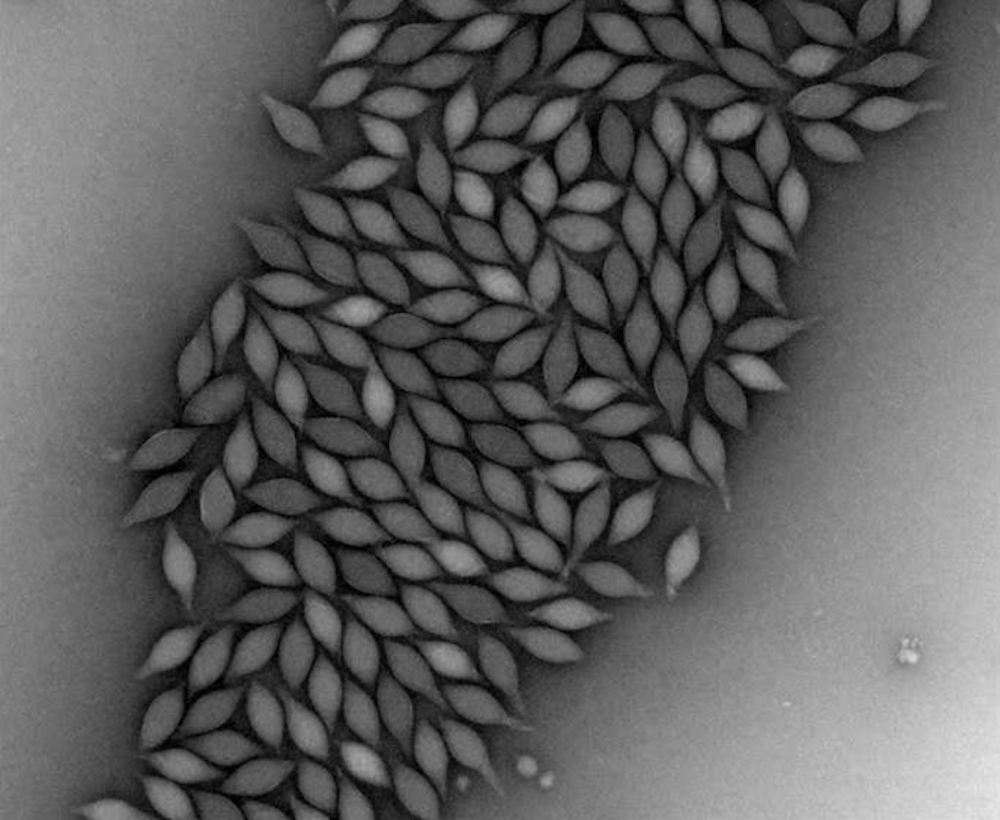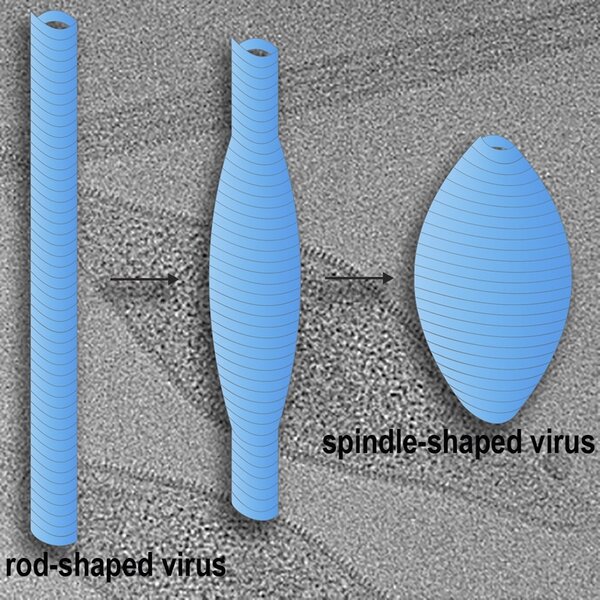Create a free profile to get unlimited access to exclusive videos, sweepstakes, and more!
These shapeshifting viruses live in near-boiling acid, and they could save your life
It's like the world's tiniest werewolf taking an acid bath for fun.

By most commonly accepted definitions, viruses are not alive, but that doesn’t stop them from sometimes behaving as if they are. And when viruses get weird, they get really weird.
Edward Egelman from the Department of Biochemistry and Molecular Genetics at the University of Virginia, and colleagues, used advances in imaging technologies to investigate the structure of viruses infecting organisms in extreme environments. The results of that study, published in the journal Cell, uncovered some truly unusual behavior which not only teaches us about the ways viruses can be built, but could unlock new technologies.
“We looked at a virus which infects hosts that live in almost boiling acid. That’s not an exaggeration, the environment is 90 degrees Celsius with a pH of 2. That’s perhaps one of the most inhospitable environments on Earth,” Egelman told SYFY WIRE.
The hot springs where these viruses set up shop, pop up around volcanoes, and derive their incredible characteristics from the thermal and chemical properties present there. At first, scientists weren’t sure how a virus could exist in such an environment, and it turns out in order to pull it off, these viruses have to change the way they construct themselves.
Most viruses build their shell by encoding a single protein which repeats itself to encapsulate their genome. As a result, most viruses are either shaped like rods or spheres. In these extreme environments, however, viruses take up less common shapes similar to champagne bottles or lemons.
Researchers spent two years looking at a virus called SMV1 under an electron microscope in order to map out its atomic structure and figure out how the hot acid wasn’t breaking it down into a virus-flavored sludge.
“What we found is it forms this capsid where these greasy surfaces slide past each other. It allows this thing to balloon out. It’s like a snake that’s eating a rabbit,” Egelman said.
It’s likely these viruses evolved from the rod-shaped viruses we’re more familiar with and, as the genome got larger, it figured out how to balloon up to hold onto more genetic material. Those greasy surfaces are made up of proteins which are incredibly hydrophobic, allowing the virus to change its shape without letting even a single atom of boiling acid inside.
Moreover, in addition to just ballooning up, they were also observed squishing themselves down and growing tails, something which is highly unusual for a virus which, as previously mentioned, isn’t actually alive.
“It’s very unusual because we think of viruses as being inert, but these were observed to go through morphogenesis and develop these tails. We show that if we can get the genome to release, the whole structure collapses down into these tails,” Egelman said.
That scientists were able to uncover the mechanisms of these viruses at all was only possible through advancements in electron microscopy, imaging, and software which has occurred over the last few years. As those tools continue to improve, it’s likely even more structures hiding out in the microbial world will reveal themselves, and with them comes the potential for new technologies.
“Understanding how these things work means we can design new structures that are impervious to solvents or acids, or other limitations. There are potential uses in medicine, in biotechnology, and even in material science. One could engineer proteins to do things we can’t even imagine,” Egelman said.
There’s a certain poetry in the idea that a virus just trying to eke out a living — well, not a living, but you get the idea — in the inhospitable environs around active volcanoes might open up the doors to preventing or curing disease, instead of causing them.



























